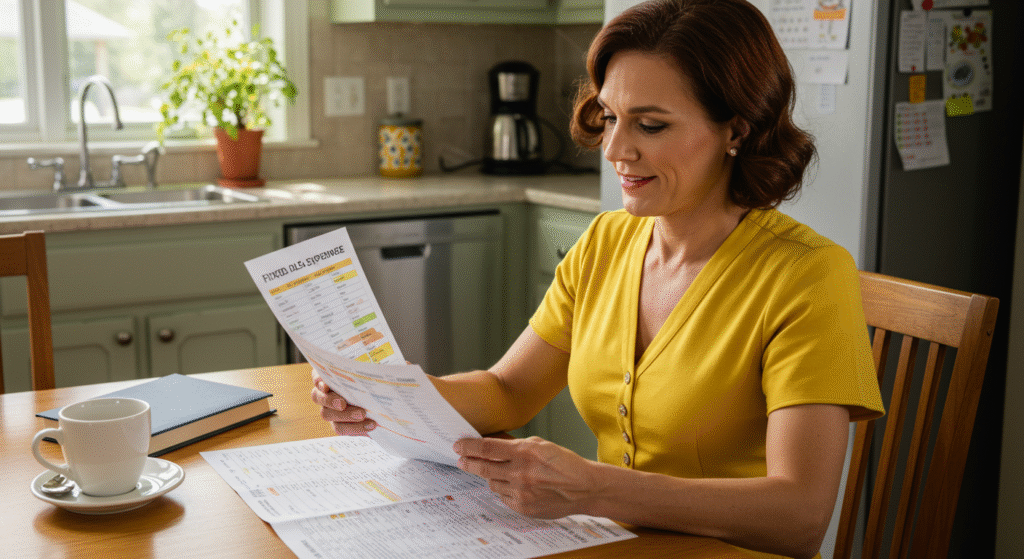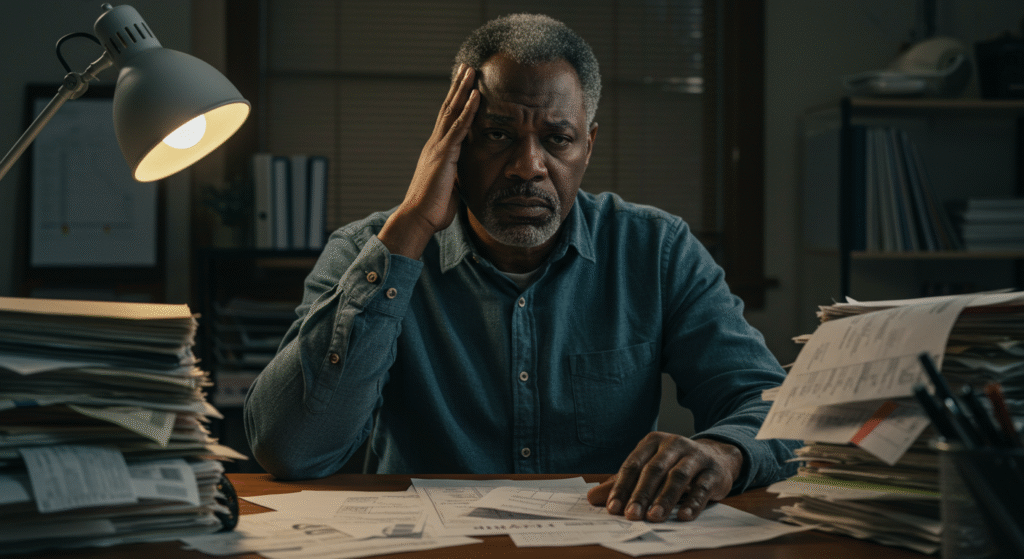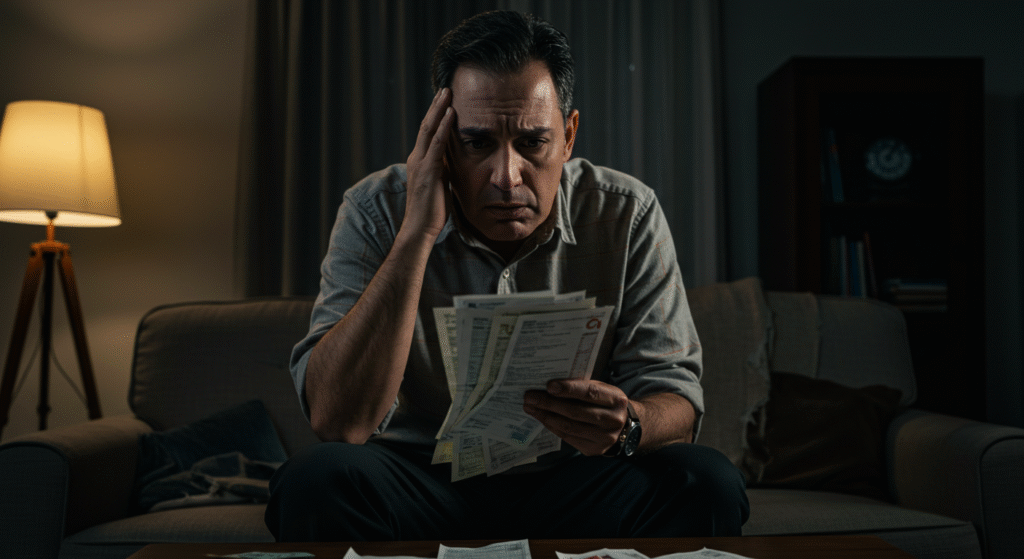Feeling overwhelmed by bills stacking up and not having enough to cover them all is one of the toughest challenges anyone can face. It’s stressful and unsettling but staying calm and focused is the first step toward regaining control. You’re not alone in this situation, and there are practical steps you can take right now to manage your finances better.
In this article, I’ll walk you through clear strategies for what to do when you can’t pay all your bills. From prioritizing essentials and communicating with creditors to exploring available resources, you’ll find guidance that helps you build a realistic plan and find some relief. Taking action, even small steps, makes a difference and can ease the pressure you’re feeling today.
Assess Your Financial Situation Carefully

When you find yourself unable to pay all your bills, the first step is to get a clear picture of your finances. You can’t fix what you don’t understand, and that means assessing your current financial situation carefully and honestly. This process is about gathering all the facts income, bills, debts, and spending habits so you can make smart, informed decisions.
Taking the time to organize this information gives you control and makes it easier to plan ahead. Here’s how you can get started.
List Every Bill and Expense
Start by writing down every monthly expense you have. That means not just rent, utilities, and loan payments but also the less obvious ones like:
- Annual or quarterly insurance premiums
- Membership fees or subscriptions (streaming services, gym, magazines)
- Credit card payments or installment plans
- Childcare or school fees
- Transportation costs like car payments, fuel, insurance
- Any bills you pay irregularly or seasonally
Jot everything down in one place a notebook, spreadsheet, or budgeting app. This list doesn’t have to be perfect at first. The goal is to capture all outflows of money, so nothing sneaks up on you later.
Identify Essential vs. Non-Essential Expenses
Once you have a complete list, it’s crucial to sort your expenses into two groups. Essentials are expenses you must cover to keep basic needs met and avoid serious consequences. Examples include:
- Housing (rent or mortgage)
- Utilities (electricity, water, heating)
- Food and groceries
- Transportation to work
- Health insurance and medications
- Minimum debt payments to avoid penalties
Non-essential expenses are those you can cut back on, pause, or delay without immediate risk. These often include:
- Entertainment subscriptions
- Dining out or takeout
- New clothing or non-urgent purchases
- Optional insurance upgrades
- Gym or club memberships
This distinction helps prioritize where your limited money should go first and what can be temporarily set aside.
Create a Zero-Based Budget
A zero-based budget is where every dollar you bring in is assigned a job, matching income exactly with your expenses. This means setting your income minus your spending and savings to zero by allocating funds intentionally. Here’s how to do it:
- Total your monthly income. Include all sources paychecks, government assistance, side gigs.
- Assign money to essentials first. Cover rent, utilities, food, and minimum debt payments as your top priorities.
- Allocate funds to savings or emergency fund if possible. Even a small amount helps build buffer.
- Plan for non-essential expenses only if money remains. This may be zero in tough months.
- Track your expenses throughout the month. Adjust if you overspend in one category by cutting back elsewhere.
This budget style forces awareness and discipline, preventing money from disappearing unnoticed. It also allows you to see clearly what you can afford and where you need to negotiate or reduce costs.
Taking these steps to assess your financial situation carefully lays a strong foundation for managing bills when money is tight. From here, you can explore options like debt negotiation, assistance programs, or income boosting with confidence that you know where you stand financially.
Prioritize Payments and Communicate with Creditors

When money is tight, deciding which bills to pay first and how to keep your creditors informed can make all the difference. Prioritizing payments isn’t just about numbers it’s about protecting what you need most to get through each day without losing your footing. At the same time, staying in touch with creditors shows you are taking responsibility, which can open doors to new arrangements and ease pressure.
Pay for Essentials First
The basics have to come before everything else. Think of your essential bills like the foundation of a house—without them, everything else starts to crumble. That means focusing on:
- Food and groceries to keep yourself and your family nourished.
- Utilities such as electricity, water, heating, and internet, which keep your home safe and livable.
- Housing costs rent or mortgage to keep a roof over your head.
- Transportation, especially if you rely on it for work or medical appointments.
Covering these essentials ensures you don’t lose access to vital resources, avoid late fees or shutoffs, and maintain your health and safety. Skimping here might seem tempting but can put you in a worse spot by triggering eviction, service disconnections, or even risks in accessing food and medicine. When I prioritize these, I focus on what keeps daily life stable and then look for flexibility with other debts.
Contact Creditors Early
Waiting until bills are overdue or collections start adds stress and limits your options. As soon as you realize money might be tight, reaching out to your creditors is key. A quick, honest conversation can make a big difference. When contacting creditors:
- Explain your situation clearly and calmly.
- Ask if they offer hardship plans, payment deferrals, or lowered payments.
- Be ready with your income and expenses to discuss what you can realistically pay.
Many creditors prefer working with you to find a manageable solution rather than forcing collections or legal action. Early communication can help stop late fees from piling up and keeps your account in better standing. It also sends a message that you’re responsible even in tough times. I’ve found that a simple phone call or email often leads to this kind of help.
Send Partial Payments with a Letter
If you can’t pay the full amount owed, sending what you can alongside a letter is a clear way to show good faith. Partial payments demonstrate you are committed to your debts, even if you can’t clear them now. When sending partial payments:
- Include a letter explaining your current financial hardship.
- Outline your plan for future payments if possible.
- Ask for confirmation that your payment was received and how it will be applied.
This approach can slow down collections or legal moves and keep lines of communication open. It also provides a written record of your efforts, which might prove helpful if disputes arise. I recommend keeping copies of letters and payment receipts for your records.
By prioritizing essentials, reaching out early, and showing willingness to pay even a portion, you position yourself better to manage when you can’t pay all your bills. These steps not only protect your immediate needs but open doors to solutions that can ease your financial burden over time.
Adjust Spending Habits and Seek Extra Income

When bills pile up and your income doesn’t stretch far enough, it’s time to take a close look at your spending habits and find ways to bring in extra money. Cutting back where you can and boosting your income, even temporarily, helps ease the pressure and keeps you moving forward. This part of the plan asks you to tighten control over non-essential expenses while exploring quick income options that fit your schedule. Here’s how I break it down.
Cut Discretionary Spending
Discretionary spending is the easiest place to trim when money gets tight. These are the expenses that feel nice but aren’t absolutely necessary, like dining out, streaming services, or new clothes. Cutting back here keeps your essential bills intact longer. Here’s what helped me:
- Limit dining out and takeout. Cooking at home can save hundreds of dollars a month. Planning simple meals and using leftovers cuts costs and reduces waste.
- Review your subscriptions. Check what you pay monthly or annually for apps, streaming, gym memberships, or magazines. Cancel anything you aren’t using or can live without.
- Avoid impulse purchases. Before buying non-essential items, wait 24 hours. This pause stops emotional or impulsive buys that add up quickly.
- Shift to free or low-cost entertainment. Instead of movies or events, try books from the library, free community activities, or podcasts to keep boredom and spending down.
- Shop smarter. When needed, buy only what’s on sale or in bulk, and choose quality over quantity to save money long term.
Cutting discretionary spending doesn’t mean a life of sacrifice. It’s about pausing extras wisely so essentials get priority and your bills don’t fall behind.
Explore Assistance Programs and Resources
Government and local programs exist precisely for times like these, offering help to keep important bills from becoming disasters. I found reaching out to resources can provide relief and give breathing room to get back on track.
- Utility bill assistance: Programs often help with electric, gas, water, or phone bills. Many utilities have emergency or low-income options.
- Rental aid and housing support: Nonprofits and local agencies can help if you’re struggling with rent or facing eviction. Dialing 211 connects you to organizations offering a variety of aid in your area.
- Food assistance: Food banks and SNAP benefits can ease grocery spending.
- Debt counseling services: Free and low-cost counseling can help organize payments or negotiate with creditors.
Look up resources specific to your city or state help often exists but requires you to ask. Using these programs properly is like a temporary safety net, letting you focus on fixing your overall money situation without losing essentials.
Consider Short-Term Income Boosts
Even small extra cash helps balance bills when income falls short. That’s why I recommend looking for fast and flexible income sources you can add without overwhelming yourself.
- Side gigs or freelance work: Driving for rideshare apps, delivering groceries, or freelance writing can generate quick payments.
- Sell unused items: Clearing out unwanted clothes, electronics, or furniture online or through local sales brings money and frees space.
- Odd jobs: Babysitting, yard work, or handyman tasks for neighbors or friends can fill gaps fast.
- Temporary positions: Seasonal or part-time jobs with immediate hiring help boost income short term.
- Use skills: Think about tutoring, pet sitting, or crafting to sell if you have a specialty.
Don’t overlook combining a few of these methods to add steady money without disrupting your current routine. These income streams can be the bridge that helps you cover bills and avoid debt until your main income stabilizes.
Adjusting how you spend daily and finding new income sources might seem like small steps but they create real momentum. In challenging times, every dollar saved and earned counts. Taking control here gives you a stronger footing to tackle the bigger issues in your finances.
Understand Long-Term Solutions and Legal Options

Once you realize that missing a payment here and there won’t fix your financial situation, it’s important to think about long-term solutions and legal choices. These approaches help you manage debts better, protect your rights, and ultimately regain control over your money. Knowing what’s available and how each option works—can guide you toward making decisions that fit your unique needs without making things worse.
Credit Counseling and Debt Management Plans
Credit counseling services provide a practical and often overlooked way to handle debt before it spirals out of control. These organizations, usually nonprofit, offer one-on-one coaching that helps you understand your budget, set realistic payment plans, and negotiate with your creditors.
A commonly used tool by credit counselors is a Debt Management Plan (DMP). This plan consolidates your debts into one monthly payment made to the counseling agency, which then distributes funds to your creditors. Because credit counselors often work with many creditors, they may get interest rates lowered or fees waived, making payments more manageable.
Benefits of credit counseling and DMPs include:
- Clear guidance on budgeting and spending habits.
- Reduced monthly payments through interest or fee adjustments.
- Regular, predictable payments that avoid missed deadlines.
- Protection from collection calls while on the plan.
Keep in mind, these plans usually take 2 to 4 years to complete and require you to stick with the agreed payments. This discipline can prevent further financial damage and help you regain stability without resorting to drastic legal measures.
Know Your Rights and Stay Informed
Knowledge about your rights as a debtor is your strongest defense. Laws like the Fair Debt Collection Practices Act protect you from harassment, unfair treatment, and deceptive tactics by debt collectors.
One key point to remember is the statute of limitations on debts. This refers to how long a creditor can legally sue you to collect a debt, usually between three to six years, depending on your state and the type of debt. Once this time passes, the debt becomes “time-barred,” meaning creditors can’t enforce it through the courts. However, making a partial payment or acknowledging the debt can restart this clock, so it’s important to be cautious.
Here are some tips to protect yourself:
- Verify all debts with validation letters; don’t assume every claim is accurate.
- Avoid sharing personal or financial details until you confirm the collector is legitimate.
- Know that they can’t call too early or too late in the day, or contact you at work if you’ve said no.
- Respond promptly to legal notices; ignoring court papers can lead to judgments that hurt your finances.
- Report scams and fraudulent collectors to consumer protection agencies.
Staying informed helps you avoid traps and scams while giving you the confidence to handle debt discussions and legal notices effectively.
Bankruptcy as a Last Resort

Bankruptcy is often seen as a heavy word, but it can provide a fresh start when debts become unmanageable. It’s designed as a legal process to either wipe out certain debts or set up a repayment plan through the courts.
There are two main types most people consider:
- Chapter 7 Bankruptcy: This type clears many unsecured debts like credit cards and medical bills, usually within a few months. It involves liquidating some assets, but exemptions often protect your home, car, or personal belongings. A Chapter 7 bankruptcy stays on your credit report for up to 10 years, which can affect your ability to get loans or credit in the future.
- Chapter 13 Bankruptcy: This option doesn’t erase debts but spreads them out over a repayment plan lasting 3 to 5 years. It’s good for those who want to keep their property but need manageable payments. It remains on your credit report for 7 years.
Bankruptcy doesn’t cover every debt—student loans, some taxes, and child support usually remain. While it impacts your credit score, it also stops most collection actions immediately, offering relief from wage garnishments, lawsuits, and persistent calls.
Because bankruptcy carries long-term consequences, it should only be considered after exploring all other options. Speaking with a bankruptcy attorney or a trusted financial counselor can clarify whether this is the right step for you.
Understanding long-term solutions and legal options shifts your approach from just reacting to problems to making thoughtful decisions that protect your financial future. Whether you choose credit counseling, defend your rights, or consider bankruptcy, you gain tools that help stop the cycle of debt and lay the groundwork for rebuilding.
Conclusion
Facing a situation where you can’t pay all your bills demands clear thinking and steady action. By assessing your finances honestly, prioritizing essential payments, and communicating early with creditors, you set yourself up to manage the challenge without losing ground.
Cutting back on non-essentials and seeking extra income can ease immediate pressure, while exploring long-term solutions like credit counseling or knowing your legal rights helps protect your future. Remember, you are not alone resources and strategies exist to help you regain control.
Take one step at a time, stay calm, and stay focused. There is a path forward when you can’t pay all your bills, and it starts with the clear plan you’ve built today. Thank you for reading, and feel free to share your experiences or questions—your voice matters in this journey.




